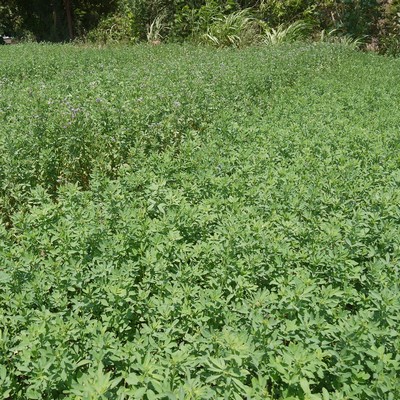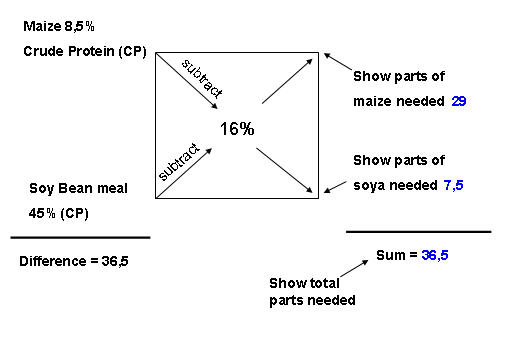Animal nutrition entails the study of the composition of the material consumed by the animal and the manner in which this material is metabolized.
The following animal foods are placed in this group;
a. Maize bran, soft rice bran, and, soft wheat bran.
b. Cereals such as sorghum, corn kernels, rice kernels, sorghum, and sorghum
c. Root crops such as cassava, sweet potatoes and turnips.
Before feeding the chickens, make sure that the roots are soaked for an hour or cooked before drying to remove the toxins that are naturally present in this type of food. In this strengthening group, fatty foods such as oil from fatty foods such as vegetable oil, fish oil help increase energy and heat in the body. Energy-rich foods account for 60-70 percent of the total food mix.
1. Body building foods:
Mashudu: These are the husks of the seeds of plants such as legumes and foods that provide oil such as sunflower, palm, peanut, soybean, cashew, and sesame. Dried blood of animals (slaughtered and inspected), this is done to avoid the possibility of chickens getting infectious diseases. Offal of fish/seafood and meat. Natural foods such as worms, termite eggs, scraps of meat from skin/bones, insects infected with blood or rotten meat and other types of food. These foods account for 20 to 30% of the total chicken feed mix.
2. Bone-strengthening foods (minerals):
a) These are mineral foods that are needed to build bones, eggshells, grow and keep the body of the bird (chicken) in good health in general.
b) Important minerals are calcium and phosphorus. In order for chickens to lay eggs with a hard shell, they must have limestone, snail shells and well-ground eggs. But it is recommended that when you add phosphorus minerals, you must also add lime minerals as appropriate, because the amount of one type is greater than the other type causes a deficiency of the smaller one.The required mineral supplements include; Finely ground bone ash, ground meal of sea snail shells, land snails and roasted egg shells. Before the eggshells and snail houses are not used it is recommended that they be burned or boiled to kill disease germs. Kitchen salt Industrially produced minerals such as Di-calcium phosphate Magadi (kilambo).
3. Foods to protect the body :
This group includes vegetable foods such as;
Ø Spinach, cow manure that has not been soaked for a long time, wild spinach, Chinese cabbage, etc.
Ø and Vitamin mix made by drug factories (vitamin premix).
Ø The sun is important in ensuring that vitamins A and D are used well in the body, so the shed must be built in a style that allows light to pass through, especially in the morning and evening.
Ø The feed of domestic chickens must be mixed with industrially prepared vitamins.
MIXING CHICKEN FOOD :
Methods of mixing chicken feed;There are two main ways to mix chicken feed, and they are;
Mixing food by machine ;o
This method is used in factories to mix food for chickens raised in large farms.
Mixing food at home (home made ration):
This is a method used to mix food for feeding a small group of chickens and a method that can be used by small breeders.
EQUIPMENT;
Shovel/shovel(spade), Tarpaulin/clean floor, Lifters, Bins/Sacks for storing mixed food.Mixed food can be placed in a weight of 25 kg-50 kg, or 100 kg.
ANALYSIS OF CHICKEN FOOD ENHANCER:
A moderate type of food
i. Foods to strengthen the body:
Ø Maize husks 48 kg
Ø Soft rice bran 26 kg
Total 74 kg
ii. Body building foods:
Sunflower seeds 18 kg
Animal blood 1 kg
Remains of fish / seafood 3 kg
Total 22 kg
iii. Bone strengthening foods (Minerals):
- kitchen salt ½ kg
- lime (dicalciumphosphate)… 2 kg
- poultry premix/ kilo ½
- bone meal 1 kg
Total 4 kg
Actual nutritional needs in summary:
Ø Foods to strengthen the body 74 kg
Ø Body building foods 22 kg
Ø Bone strengthening foods (Minerals) 4 kg
Total food mix 100 kg
STEPS TO MIX CHICKEN FOOD :
FIRST STEP:In the first step you will start mixing mineral foodsMix, lime, salt and bone ash pig mix well – you will call this mixture No.1
STEP TWO:Mix the mixture with blood and minced fish – you will call this mixture No. 2 STEP THREE:Blend No. 2 and mix it well, which you will call Mixture No. 3.
STEP FOUR:Mixture No. 3 should be poured over a pile of mixed bran (corn bran and soft rice bran).o Take a clean, dry tongs and use it to mix the pile of food to distribute it well.
Things to consider in feeding and caring for chicken feed:a) After mixing the food will be placed in bags or sacks and kept in the barn (stoo) until it is needed for feeding the chickens.b) Make sure the chickens get nutrition as recommended by experts.c) The mixed food must be kept in a dry place so that it is not damaged by moisture, as in the chaga, the strips spread on the stones were arranged properlyd) Spoiled food is not suitable for feeding chickens as it can cause health problems.d) Mixed food should not sit for a long time after preparation.
Additional foods:To ensure that the chickens get enough nutrition, the chickens can be given ants and ants.Also, the types of grain alternatives that are available depend a lot on the type of crops grown in the respective area.
Methods of rearing ants and maggots: Maggots and ants are a good and easy protein-rich feed for chickens reared in an improved free-range system. However, these sources of protein feed only contribute to what the chickens should be given.a. It is recommended to give the chicks worms and ants because they need protein in large and reliable quantities.Maggots and larvae can be grown easily and used to improve chick feed. c) Maggots and larvae can be grown using blood, internal organs of the cow’s stomach as well as cow dung.d) The pot should be filled with water one-third of its volume, the flies will come and lay eggs in the mixture which the tortured trainees will start eating the mixture.e) After that all these things will be mixed together in one big pot which will be left open during the day and covered during the night.f) Five days later water will be filled in the jar and the students will be collected while floating. After collecting, wash them well with water and then feed them directly to the chickens.g) Remember to keep the pot that the trainees are growing away from people’s areas to avoid the smell that can disturb people.
FEEDING CHICKEN :
Estimated food to feed 100 chicks/day:
| Age (weeks after birth) | Number of chicks | Amount requiredFor one day (kilo) |
| 1 | 100 | 1 |
| 2 | 100 | 1 |
| 3 | 100 | 2 |
| 4 | 100 | 3 |
| 5 | 100 | 4 |
| 6 | 100 | 5 |
Brief information about feeding chickens: It is difficult to estimate the food requirements of foraging chickens, but it is estimated that one large chicken weighing 1-2 kg needs food weighing 80-160 grams per day for indoor chickens but those chickens are raised in a semi-free-range system. are estimated to decrease to 30-50 grams per day. It should also be noted that the amount of food depends on the needs due to weight and production, for example, chickens that are laying and growing need more food than those that are not laying or have stopped growing. Make sure the chickens are kept with clean food and water in clean containers and change them every time they run out……………………………………………………………………………………………………………………………





